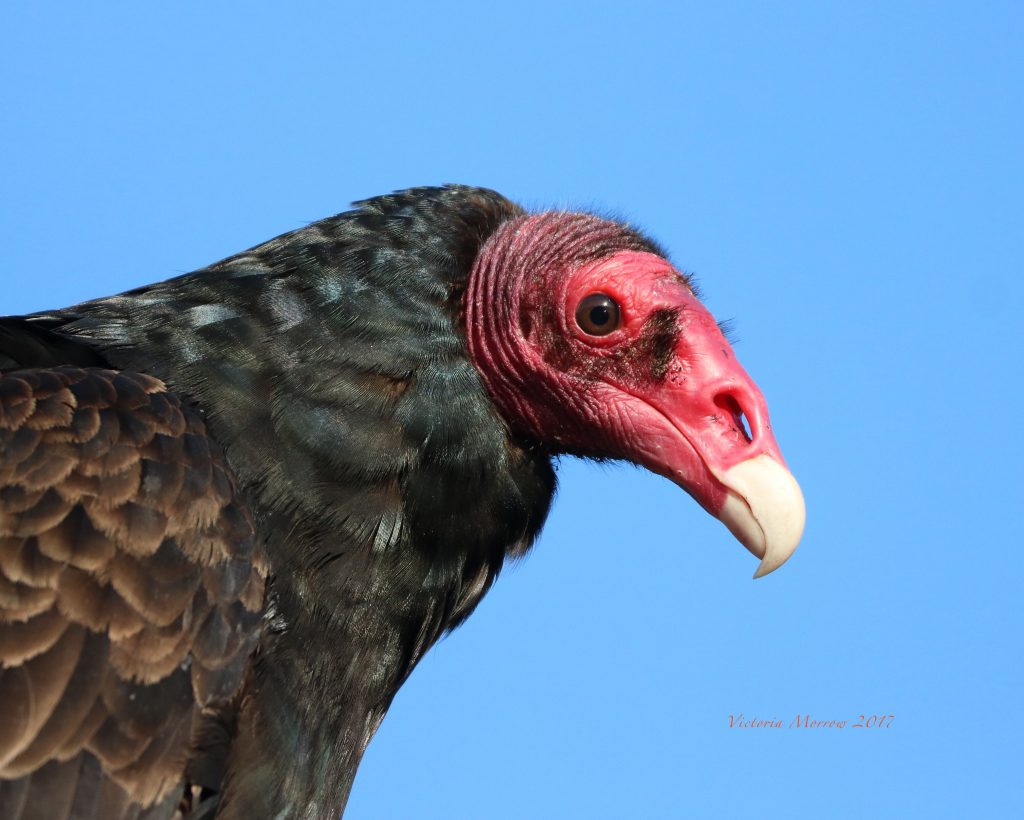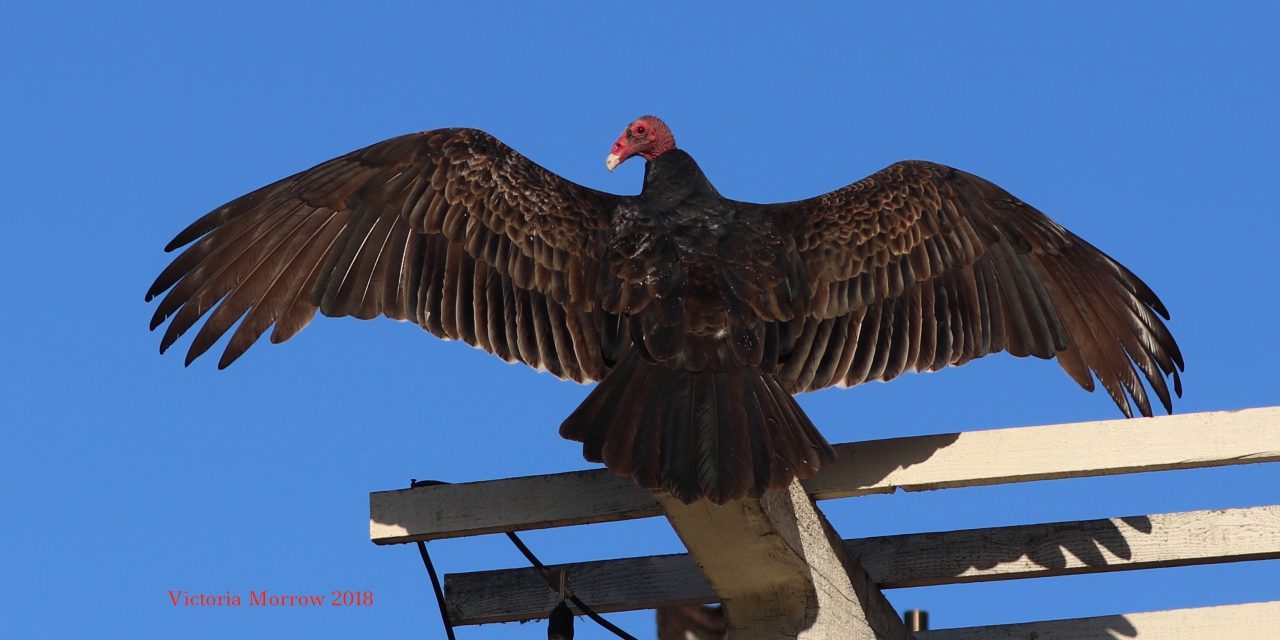While hiking or traveling, you have probably seen large black birds with considerable wingspans soaring above in the sky many times. Circling around and around, these gliders are proficient at catching rising thermals. What you see are turkey vultures raising their wings in a V while making wobbly circles as they ride the updrafts. The average wingspan of a turkey vulture is about 6 feet. Despite this large size, vultures only weigh between 2-4 pounds, which allows them to fly through the atmosphere using very little energy, rarely needing to flap their wings. The vulture’s red hairless head resembles a wild turkey’s head. Hence, it was given its common name, turkey vulture.
Vultures are far from being an attractive bird and are probably one of the most misunderstood amongst our feathered friends. Hollywood, folk tales, and even cartoons have influenced how we react to vultures. These avian are often portrayed in a negative light, but they are an integral part of our ecological community. Equipped with a small red bald head, predominately dark feathers, and hunched-looking posture give them a somewhat haunting appearance; however, these birds play an extremely important part in the food chain and ecosystem. Turkey vultures are beneficial to people because they remove animal decay from our environment. They are the cleanup crew. A keen sense of smell along with excellent eyesight leads them to a fresh carcass. Extraordinary sniffing abilities allow them to pick up deceased animal odors from over a mile away, which is a most unusual feature for a bird. Vultures are nature’s scavengers. The carrion-eating bird cleans up the roads and countryside free of charge. Without vultures, the insect population would increase, and bacteria and diseases would spread. Turkey vultures help keep habitats healthy. Preventing the contamination of water sources, particularly in the wild, is an overlooked benefit of vultures.
Turkey vultures seek a dead animal carcass by flying over open or wooded land, carefully scoping the ground, and watching the actions of other wildlife hunters. Flying low allows them to detect gasses produced by the decaying process. Vultures feed almost exclusively on dead animals. This raptor, however, does prefer fresh carrion. Occasionally eating decomposing vegetable matter, live insects, and inanimate fish in drying ponds. Do you wonder how turkey vultures can digest deteriorating creatures? A vulture’s stomach is very smartly supplied with strong enzymes that kill dangerous microorganisms and toxins. A sharp, powerful hooked bill allows them to cut into prey. Unlike an eagle or hawk, their feet are useless; they are not equipped to catch, kill, or rip into game. However, vulture’s beaks can tear through tough hide. Bald heads and necks are designed to stay clean while feeding inside a body cavity. Carrion will not adhere to the bare skin as it would if adorned with feathers. This allows the turkey vulture to eat without messing up their head piece or creating a bacterium-forming condition.

It is quite common to spot turkey vultures assembled in large community clusters, usually only breaking away to forage independently. Groups of perched vultures often roosting on leafless trees and manmade structures are called a wake. Perhaps while walking the Bob Jones Pathway during early morning hours, you may have seen several vultures in a tree standing in a spread-winged stance as if sunbathing, which is called a heraldic pose. It is believed that there are several reasons vultures do this stance, such as increasing body temperature after the cool night, drying out wings, and baking off bacteria. It is interesting to note that turkey vultures lower their nighttime body temperature by about 6 degrees.
Seldom will you hear a sound from a turkey vulture. That is because they lack a syrinx, which is the vocal organ of birds. The only vocalization vultures are capable of are low hisses or grunts. Normally, those calls are only done when feeding or nesting. Nesting preparation is minimal. Little or no nest is built, eggs are simply laid on debris or on a flat bottom of the nest site. Two eggs are commonly laid, but sometimes only one, very rarely three. Nests are often located in sheltered areas, such as under rocks, crevices in cliffs, caves, hollow trees, or in old buildings. Both parents responsibly share incubation duties, and one parent will remain with the young after hatching. Feeding the young by regurgitation is done by mom and dad on an equal basis.
The next time you see a turkey vulture think about the crucial role they play in the balance of nature. Beauty is indeed in the eye of the beholder. We are fortunate to have a substantial vulture population in our area. Possessing few natural predators, vultures can live up to 24 years. It is pretty much a guarantee that you will catch a glimpse of a turkey vulture while on the Bob Jones Pathway or, for that matter, anywhere outdoors in Avila. Simply look up into the daytime sky. Nature amazingly provides wonderful birds and animals that are our wildlife pals. Turkey vultures serve a purpose. Let us work at taking good care of each other.






